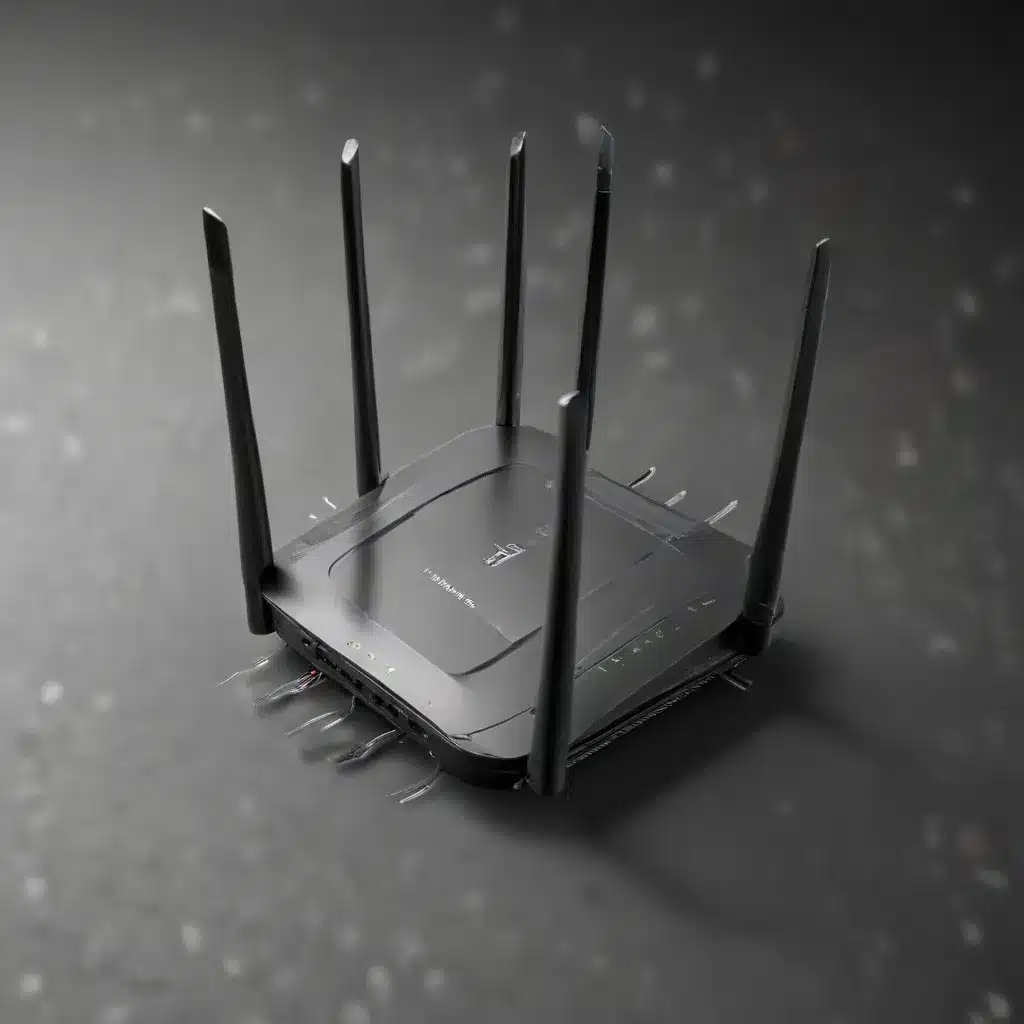Wireless Networking
In today’s fast-paced digital world, wireless networking has become an integral part of our lives. From connecting our smartphones and laptops to the internet, to enabling seamless communication between devices in our homes and offices, wireless technology has revolutionized the way we live and work. In this comprehensive article, we’ll delve into the world of wireless networking, exploring its various technologies, network topologies, security considerations, performance factors, and emerging trends.
Wireless Technologies
At the heart of wireless networking lies a diverse array of technologies, each with its own unique characteristics and applications. Let’s start by exploring the most prominent ones:
Wi-Fi (IEEE 802.11)
The undisputed champion of wireless connectivity, Wi-Fi, is based on the IEEE 802.11 standard. Over the years, this technology has evolved significantly, with the latest iteration, Wi-Fi 6 (802.11ax), offering blazing-fast speeds, improved efficiency, and enhanced security features. Wi-Fi networks are the backbone of connectivity in homes, offices, and public spaces, enabling seamless access to the internet and local resources.
Bluetooth
Bluetooth is a wireless personal area network (WPAN) technology primarily designed for short-range, low-power data exchange. It’s commonly used to connect devices like headphones, speakers, and wearables to our smartphones and laptops. Bluetooth’s strength lies in its ease of use, energy efficiency, and ability to create ad-hoc networks between compatible devices.
Cellular Networks
Cellular networks, such as 4G LTE and the emerging 5G, provide wide-area wireless connectivity, allowing us to stay connected to the internet and access various services on the go. These networks leverage a network of strategically placed cell towers to provide coverage over large geographic areas, making them the backbone of modern mobile communication.
Network Topologies
Wireless networks can be configured in different topologies, each with its own advantages and use cases. Let’s explore the most common ones:
Ad-Hoc Networks
Also known as peer-to-peer networks, ad-hoc wireless networks are formed when devices connect directly to each other, without the need for a central access point or infrastructure. These networks are useful for quick, temporary connections, such as sharing files between laptops or setting up a quick gaming session.
Infrastructure-Based Networks
In an infrastructure-based wireless network, devices connect to a central access point (AP), which then relays the data to the broader network or the internet. This is the most common setup for home and office wireless networks, as it provides a more reliable and managed connectivity experience.
Mesh Networks
Wireless mesh networks are a more advanced topology, where each node (device) in the network can act as both a client and a router, forwarding traffic on behalf of other nodes. This creates a self-healing, resilient network that can automatically route around obstacles or failed nodes, making it a popular choice for IoT deployments and smart city applications.
Wireless Security
As with any network, security is a critical consideration when it comes to wireless connectivity. Let’s explore some of the key security aspects:
Encryption Protocols
Wireless networks typically employ encryption protocols to protect data transmitted over the air. The most commonly used protocols are WPA2 (Wi-Fi Protected Access 2) and the newer WPA3, which offer robust encryption and authentication mechanisms to safeguard against unauthorized access.
Authentication Methods
In addition to encryption, wireless networks often utilize authentication methods to verify the identity of connecting devices and users. This can include techniques like WPA2-Personal (using a shared passphrase) or WPA2-Enterprise (leveraging centralized authentication servers).
Wireless Intrusion Detection
To detect and mitigate potential security threats, wireless networks can be equipped with intrusion detection systems (IDS) that monitor for suspicious activity, such as unauthorized access attempts or rogue access points.
Wireless Network Performance
The performance of a wireless network is a crucial factor in ensuring a seamless user experience. Let’s explore some key aspects that influence wireless network performance:
Bandwidth and Throughput
Wireless networks operate within a limited radio frequency (RF) spectrum, which can impact the available bandwidth and overall throughput. Factors such as the number of connected devices, interference from other wireless signals, and the wireless standard (e.g., Wi-Fi 6) used can all affect the network’s data-carrying capacity.
Latency and Jitter
Wireless networks can be susceptible to latency (the time it takes for data to travel from one point to another) and jitter (variations in latency), which can impact the performance of real-time applications like video conferencing or online gaming. Network design, device placement, and interference mitigation strategies can help optimize these metrics.
Interference and Spectrum Management
Wireless networks operate within a shared spectrum, which can lead to interference from other wireless devices, such as Bluetooth, cordless phones, or even microwave ovens. Careful spectrum management, including channel selection and power control, is crucial to minimizing the impact of interference on wireless network performance.
Wireless Network Design
Designing an effective wireless network requires careful planning and consideration of various factors. Let’s explore some key aspects of wireless network design:
Site Surveys and Planning
Before deploying a wireless network, it’s essential to conduct a thorough site survey to understand the physical environment, identify potential obstacles, and map out the optimal placement of access points. This process helps ensure comprehensive coverage and minimize dead zones.
Access Point Placement
The strategic placement of wireless access points is critical for achieving seamless connectivity and optimal performance. Factors such as coverage area, user density, and potential sources of interference must be taken into account when determining the optimal locations for access points.
Wireless Network Optimization
Ongoing optimization is essential to maintain the performance and reliability of a wireless network. This may involve adjusting parameters like channel assignments, transmit power, and client load balancing to adapt to changing environmental conditions and user demands.
Wireless Network Troubleshooting
Despite the advancements in wireless technology, issues can still arise, and troubleshooting becomes a necessary skill. Let’s explore some common wireless network problems and how to address them:
Connectivity Issues
Troubleshooting connectivity issues, such as clients being unable to connect to the network or experiencing frequent disconnections, may require investigating factors like signal strength, interference, and network configuration.
Performance Problems
If users experience poor wireless network performance, the root cause could be related to bandwidth limitations, interference, or even client device compatibility. Analyzing network traffic, identifying congestion points, and optimizing network parameters can help resolve such issues.
Security Vulnerabilities
Keeping a wireless network secure is an ongoing challenge. Regularly updating firmware, monitoring for unauthorized access attempts, and implementing robust security protocols are essential to mitigate potential vulnerabilities.
Emerging Wireless Technologies
As technology continues to evolve, the world of wireless networking is also witnessing exciting advancements. Let’s take a glimpse into some of the emerging trends:
5G and Beyond
The advent of 5G cellular technology has ushered in a new era of high-speed, low-latency wireless connectivity. 5G promises to revolutionize various applications, from mobile broadband to mission-critical IoT services. Looking ahead, the continued evolution of cellular networks, such as 6G, will further enhance wireless capabilities.
Internet of Things (IoT)
The rise of the Internet of Things has created a vast ecosystem of connected devices, from smart home appliances to industrial sensors. Wireless technologies, such as Bluetooth Low Energy (BLE) and low-power wide-area networks (LPWANs), are enabling the seamless integration of these IoT devices into our lives and businesses.
Wireless Power Transfer
The concept of wirelessly powering devices is gaining traction, with technologies like magnetic resonance and radio frequency (RF) energy harvesting enabling the untethered charging of electronic devices. This advancement has the potential to revolutionize the way we power our gadgets and IoT devices.
As we delve deeper into the world of wireless networking, it’s clear that this technology has become an integral part of our digital landscape. From enabling seamless connectivity in our homes and offices to powering the next generation of IoT applications, wireless networking continues to evolve and transform the way we live and work. By understanding the underlying technologies, network topologies, security considerations, and performance factors, we can make informed decisions and leverage the full potential of wireless networking to enhance our digital experiences.













